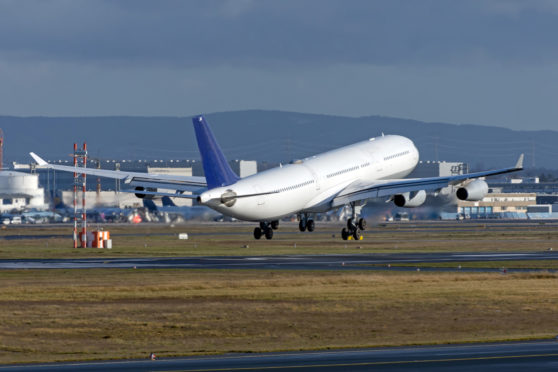
Planes need longer distances to take off because of global warming, scientists have said.
Researchers have found warmer air and changing winds are affecting the ability of aircraft to leave the ground.
The findings, published in the journal Climatic Change, suggest airports with shorter runways will require planes to reduce weight to compensate.
The study authors say it might mean airlines have to cut passenger numbers or fly to fewer destinations in the future.
Professor Paul Williams, an atmospheric scientist at the University of Reading and co-author on the study, said: “Warm air and slow winds make it harder for planes to get off the ground, and climate change appears to be making both of these factors more common.
“Our study is the first to combine measurements of air temperatures and wind speeds to calculate the precise impact on take-offs.
“Reducing passenger numbers clearly results in a financial hit to airlines.
“Reducing the amount of fuel being carried is an alternative way of shedding weight, but limits the distance that can be travelled.
“Another possibility is extending runways to allow higher take-off speeds to be reached but this would mean covering these holiday paradises in even more tarmac.”
A team of scientists and engineers from the UK and Greece analysed more than 60 years of weather and aircraft data from 10 Greek airports, taking into account headwind, surface conditions, temperature and runway slope.
The researchers looked at take-off conditions for two types of aircraft – the medium-sized passenger jet Airbus A320, and the smaller de Havilland DHC8-400.
The team calculated the take-off distance needed and the maximum possible take-off weight for both the planes.
They found the take-off distance required for the A320 increased by an average of 2.7 metres per year while for the DHC8-400 it was by 1.4 metres per year.
Meanwhile, the maximum take-off weight for the A320 decreased by an average of 0.12% per year since 1988, while for the DHC8-400, it was 0.02% per year.
Both aircraft were also found to take a longer time to climb after take-off.
At one airport, the required take-off distance for the A320 increased by 98.6 metres between 1988 and 2017, the researchers said.
In another extreme case, at the relatively short 1511m runway at Chios Airport in Greece, the researchers found that the maximum take-off mass for the A320 was reduced by 3,990kg on average in the 30 years to 2017 – the equivalent weight of 38 passengers and their luggage.
The research was carried out by the University of Reading along with Cranfield University, the University of West London and the Athena Research Centre in Greece.

Enjoy the convenience of having The Sunday Post delivered as a digital ePaper straight to your smartphone, tablet or computer.
Subscribe for only £5.49 a month and enjoy all the benefits of the printed paper as a digital replica.
Subscribe